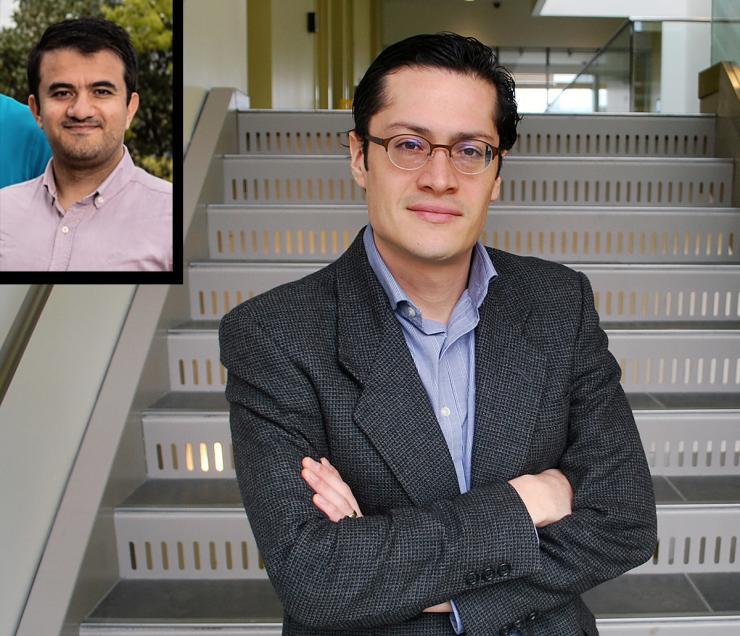Building a Better Blood Test
Jun 22, 2020 — Atlanta, GA

For most of us, it happens at least once a year – a complete blood count, or CBC, a hematological analysis in which the clinician takes a sample of your blood to evaluate your overall health.
A CBC usually coincides with your annual physical examination, but may also be administered as needed by your health care provider. It measures your red blood cells, which carry oxygen, and hemoglobin, the oxygen-carrying protein in your red blood cells. It tallies your white blood cells, which fight infection, and platelets, which help with blood clotting. And it calculates hematocrit – the proportion of red blood cells to plasma in your blood. And it can be used to detect a wide range of disorders, like anemia, infection, or leukemia.
“It’s the most common medical test performed, and one of the most critical for screening, diagnosing, and monitoring blood conditions or diseases,” says Francisco Robles, assistant professor in the Wallace H. Coulter Department of Biomedical Engineering at Georgia Tech and Emory and a researcher in the Petit Institute for Bioengineering and Bioscience at Tech.
“But right now, in order to do these tests, you need very large, complex systems,” he adds. “You need multiple reagents, expensive equipment, and high-trained technical personnel to count the number of blood cells. It requires a lot of calibration and it’s problematic because even though this is the most common test, you can’t just go into a CVS or any clinic to have it performed. You have to send it to a specialized lab and the process can take days.”
So Robles and his research team set out to improve this most common of medical tests – to simplify and improve CBC and blood smear analysis, towards the development of a faster, more affordable, easy-to-use point-of-care device for clinical settings and in regions with limited resources. And they explain it all in their recently-published paper, “Label-free Hematology Analysis Using Deep-Ultraviolet Microscopy,” in the journal PNAS (Proceedings of the National Academy of Sciences).
The latest research builds on the lab’s previous work in ultraviolet hyperspectral interferometric (UHI) microscopy, a cost-efficient system for molecular imaging that overcomes challenges typically associated with UV spectroscopy (subpar cameras and light sources, phototoxicity, chromatic aberration, etc.).
In the latest paper, the Robles team introduces a novel label-free optical assay enabling major advancements in hematological analysis, circumventing the limitations of the current standard-of-care, while achieving equivalent diagnostic power for peripheral blood and bone marrow analysis. This new approach provides analysis of tens of thousands of live cells in minutes, instead of waiting for days, without any sample preparation.
The work brought together the labs of two BME and Petit Institute researchers – Robles and Wilbur Lam, associate professor in the Coulter Department and a physician at the Aflac Cancer and Blood Disorders Center of Children’s Healthcare of Atlanta and Department of Pediatrics in Emory’s School of Medicine. The lead author of the paper, Ashkan Ojaghi, is a Ph.D. student in Robles’ lab. The paper’s other authors were Gabriel Carazzana and Assad Abas (undergraduate researchers in Robles and Lam’s labs, respectively), Christina Caruso (pediatric hematologist, Children’s and Emory), and David Myers (assistant professor, Coulter Department).
As part of the study, the researchers validated the clinical utility of their wide-field pseudo-colored UV images by performing a quantitative molecular and structural analysis, and a blind visual analysis. In the latter, a panel of hematologists studied blood smears from healthy donors and patients with thrombocytopenia and sickle cell disease and found that new system provides feedback equivalent to the gold standard.
Ultimately, Robles says, the team managed to unify two different tests, “the complete blood count and the microscopic analysis. We can combine these two into something that is small, compact, portable, and easy to use, and we basically need just a few microliters of blood to get all of the information we need. This can potentially be used as an at-home device, so patients can monitor their own blood counts at home, eventually.”
Jerry Grillo
Communications Officer II
Parker H. Petit Institute for
Bioengineering and Bioscience




